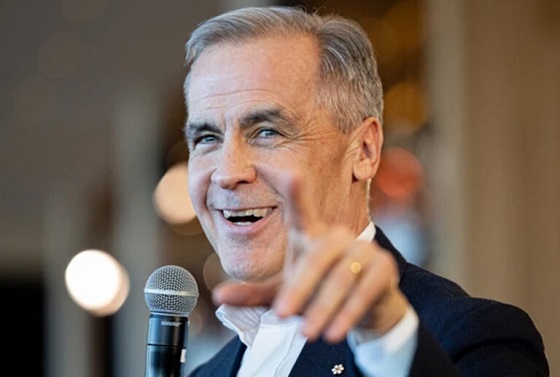Business
CEWS 2.0 – Why I see it as another attack on the small business owner

July 18, 2017 – The Minister of Finance announces draft legislation of the Tax on Split Income (TOSI) rule changes that would have far reaching impact into the small business community and although some changes were made, the rules have negatively impacted small businesses ever since and will continue for years to come.
Three years later, July 17, 2020 – The same Minister of Finance tables legislation of the changes to the Canada Emergency Wage Subsidy (CEWS), what I like to call CEWS 2.0 which will also continue for years to come.
Before you try to correct me and say that the subsidy is only for 2020, please read on.
While many media and politician soundbites like to give the impression of how CEWS 2.0 will help small business, I cannot help but see this as an opposite approach.
Do not get me wrong, money is money, and businesses will take all the help they can get, and if my business qualifies, I will take full advantage of it, but I personally don’t have to pay a tax specialist to figure it out.
There are two new calculations to CEWS 2.0.
- a baseline amount based on the percentage of revenue decline in the month compared to either the same month in 2019, or the January-February 2020 average revenue amount.
- a top-up amount based on the three-previous month revenue decline where it exceeds 50%.
Instead of an all or nothing at a 30% decline, even a 1% decline will get you a pro-rated payout, although the costs of figuring out your eligible amount might outweigh the benefit.
In fact, you could have an increase in revenue compared to this time last year and still get a payout. Make sense?
If the previous three months were greater than a 50% decline you qualify for the top-up amount regardless of the result for the current month.
The complexity of the CEWS design will reward those that have experts in their corner compared to those that do not.
Consider the following scenario:
A large public corporation that has employees making more than $1,129 a week will be able to not only have a simple calculation, they will not have anyone “related” to the corporation that they have to do extra baseline remuneration calculations for. Just like CEWS 1.0, in CEWS 2.0 every employee including the CEO will be subsidized in a public corporation, with no clawback mechanism (as recommended in my earlier article, the Keep it Simple S…ubsidy).
In the large public corporation, the bookkeeping, payroll, and accounting function will be up to date and (I would hope) accurate because of internal controls. They also frequently have large accounting and I.T. departments to easily calculate the eligibility and amounts for such a subsidy.
But let us compare this to a small owner-managed business like a restaurant for example. The profit margins in restaurants are already sliced thinner than the meat on a charcuterie board. Add to this the extra costs of social distancing and safety precautions, as well as the inconsistency of regulations for being closed, re-opened, and closed again as we navigate the pandemic and restaurants seem like a lost cause for a business owner.
Assuming they are able to still successfully navigate the minefield that COVID19 has placed on their livelihoods, many restaurants have dozens of part-time staff, including family members.
So right away we have a glaring difference: relatives.
The rules in CEWS 2.0 has not reduced any of the requirements for calculations to be made with respect to relatives working in the business. Relatives must have been being paid as a wage employee during one of a few optional calculation periods prior to March 15, 2020 to be eligible for any of the CEWS.
Do you remember TOSI?
TOSI basically was designed so you could only income split dividends with related persons under a complex set of strict rules. Even though restaurants are considered “food services”, the Canada Revenue Agency (CRA) and Finance have in Example 4B of their TOSI explanatory notes an example of a restaurant which would not be considered a service. In doing so, they sent the message to continue to pay yourselves in dividends if you run a family owned restaurant.
As a result, family owned restaurants continued to do just that.
Fast forward to 2020 and you now have family members working in a low margin business, with no support for their dividend remuneration under CEWS 1.0 or CEWS 2.0.
Even if the small business owner was one of the lucky fortune tellers that decided to pay themselves wages, they still have to do a baseline calculation (two different ways – weekly or bi-weekly – for each claim period) just to figure out how much they might be able to get.
Keep in mind the bi-weekly periods are the periods that were set by finance, not the period you may already be using for your payroll cutoff.
Now we have the part-time restaurant staff in my example. The family business now must calculate the average weekly earnings of each individual staff member during the claim period to figure out what the maximum amount of benefit is.
To make it better, the bookkeeping records better be pristine and accurate on a month to month basis, rather than on an annual basis like many, if not most, small businesses do.
Enter in that sale on the 1st of this month instead of the 31st of last month, and you could be looked at as “gaming the system”.
If you are a late-night pub restaurant, make sure that you are closing out the tills at 11:59pm on the 31st of the month – or your numbers would be inaccurate and you could be called a “tax cheat.”
I can’t wait for the Halloween pub crawls this year, when the weekly earnings of those late-night pub staff will have to also be cut off at midnight Saturday, October 31st. At least there will be plenty of mask wearing that night.
So, we now have increased the compliance costs for the small restaurants for monthly reporting, weekly payroll calculations, overnight cutoffs on month-ends, and special treatment for relatives of the business.
It doesn’t take a tax specialist, a cost-accounting CPA, or a PhD in mathematics to figure out that this is going to cost more per employee in overhead costs to the small family business in comparison to the large public corporation.
While I am more than happy to receive money from my clients for doing the immense research and calculations that will be required, the fact remains for the small business owner, is all of this extra work and compliance cost worth it in the end?
Sadly, you will not know if it is worth it, until after you have put in the work to calculate it.
If you happen to be one of the lucky ones that qualifies, you will then have to track the amount of CEWS you received for each employee separately.
This is because the CRA in question 29 of their Frequently Asked Questions on CEWS said that there will be a new box at the bottom of the T4 required to be filled in for the amount of CEWS received for that employee.
But what about my earlier statement that CEWS will impact businesses for years to come? With your calculation and compliance is going on until the end of February 2021 with the addition of the T4 box, does it end there?
February 2021 will just be the beginning. This will begin the audits of the CEWS claims (if they have not already started).
Since the CEWS is required to be reported on the 2020 T4 slips filed by the business in February 2021, would it be fair to say that the three-year tax compliance clock only begins at that time?
This means from now until February of 2024 you can expect to have a call from (likely the payroll audit division of) the CRA to take a look at:
- your weekly employee wage calculations;
- the monthly revenue calculations;
- the monthly cut-offs;
- the timing of your invoices;
- the CEWS amounts allocated to individual staff members; and
- the scrutiny of amounts paid to relatives;
All while you have the joy of having an internal debate with yourself on whether to pay your tax specialist to deal with them, or to try and go at it alone and confused.
July 2017 – TOSI
July 2020 – CEWS 2.0
I wonder what July 2023 will bring.
This article was originally published on July 23, 2020.
—
 Cory G. Litzenberger, CPA, CMA, CFP, C.Mgr is the founder of CGL Strategic Business & Tax Advisors (CGLtax.ca). Cory is an advocate for small business in his role as Alberta Governor for the Canadian Federation of Independent Business (CFIB); converts legislation into layman terms for fun; and provides Canadian tax advisory services to other CPA firms across Canada; opinions are his own.
Cory G. Litzenberger, CPA, CMA, CFP, C.Mgr is the founder of CGL Strategic Business & Tax Advisors (CGLtax.ca). Cory is an advocate for small business in his role as Alberta Governor for the Canadian Federation of Independent Business (CFIB); converts legislation into layman terms for fun; and provides Canadian tax advisory services to other CPA firms across Canada; opinions are his own.
Biography of Cory G. Litzenberger, CPA, CMA, CFP, C.Mgr can be found here.
2025 Federal Election
As PM Poilievre would cancel summer holidays for MP’s so Ottawa can finally get back to work

From Conservative Party Communications
In the first 100 days, a new Conservative government will pass 3 laws:
1. Affordability For a Change Act—cutting spending, income tax, sales tax off homes
2. Safety For a Change Act to lock up criminals
3. Bring Home Jobs Act—that repeals C-69, sets up 6 month permit turnarounds for new projects
No summer holiday til they pass!
Conservative Leader Pierre Poilievre announced today that as Prime Minister he will cancel the summer holiday for Ottawa politicians and introduce three pieces of legislation to make life affordable, stop crime, and unleash our economy to bring back powerful paycheques. Because change can’t wait.
A new Conservative government will kickstart the plan to undo the damage of the Lost Liberal Decade and restore the promise of Canada with a comprehensive legislative agenda to reverse the worst Trudeau laws and cut the cost of living, crack down on crime, and unleash the Canadian economy with ‘100 Days of Change.’ Parliament will not rise until all three bills are law and Canadians get the change they voted for.
“After three Liberal terms, Canadians want change now,” said Poilievre. “My plan for ‘100 Days of Change’ will deliver that change. A new Conservative government will immediately get to work, and we will not stop until we have delivered lower costs, safer streets, and bigger paycheques.”
The ’100 Days of Change’ will include three pieces of legislation:
The Affordability–For a Change Act
Will lower food prices, build more homes, and bring back affordability for Canadians by:
- Cutting income taxes by 15%. The average worker will keep an extra $900 each year, while dual-income families will keep $1,800 more annually.
- Axing the federal sales tax on new homes up to $1.3 million. Combined with a plan to incentivize cities to lower development charges, this will save homebuyers $100,000 on new homes.
- Axing the federal sales tax on new Canadian cars to protect auto workers’ jobs and save Canadians money, and challenge provinces to do the same.
- Axing the carbon tax in full. Repeal the entire carbon tax law, including the federal industrial carbon tax backstop, to restore our industrial base and take back control of our economy from the Americans.
- Scrapping Liberal fuel regulations and electricity taxes to lower the cost of heating, gas, and fuel.
- Letting working seniors earn up to $34,000 tax-free.
- Axing the escalator tax on alcohol and reset the excise duty rates to those in effect before the escalator was passed.
- Scrapping the plastics ban and ending the planned food packaging tax on fresh produce that will drive up grocery costs by up to 30%.
We will also:
- Identify 15% of federal buildings and lands to sell for housing in Canadian cities.
The Safe Streets–For a Change Act
Will end the Liberal violent crime wave by:
- Repealing all the Liberal laws that caused the violent crime wave, including catch-and-release Bill C-75, which lets rampant criminals go free within hours of their arrest.
- Introducing a “three strikes, you’re out” rule. After three serious offences, offenders will face mandatory minimum 10-year prison sentences with no bail, parole, house arrest, or probation.
- Imposing life sentences for fentanyl trafficking, illegal gun trafficking, and human trafficking. For too long, radical Liberals have let crime spiral out of control—Canada will no longer be a haven for criminals.
- Stopping auto theft, extortion, fraud, and arson with new minimum penalties, no house arrest, and a new more serious offence for organized theft.
- Give police the power to end tent cities.
- Bringing in tougher penalties and a new law to crack down on Intimate Partner Violence.
- Restoring consecutive sentences for multiple murderers, so the worst mass murderers are never let back on our streets.
The Bring Home Jobs–For a Change Act
This Act will be rocket fuel for our economy. We will unleash Canada’s vast resource wealth, bring back investment, and create powerful paycheques for workers so we can stand on our own feet and stand up to Trump from a position of strength, by:
- Repealing the Liberal ‘No Development Law’, C-69 and Bill C-48, lifting the cap on Canadian energy to get major projects built, unlock our resources, and start selling Canadian energy to the world again.
- Bringing in the Canada First Reinvestment Tax Cut to reward Canadians who reinvest their earnings back into our country, unlocking billions for home building, manufacturing, and tools, training and technology to boost productivity for Canadian workers.
- Creating a One-Stop-Shop to safely and rapidly approve resource projects, with one simple application and one environmental review within one year.
Poilievre will also:
- Call President Trump to end the damaging and unjustified tariffs and accelerate negotiations to replace CUSMA with a new deal on trade and security. We need certainty—not chaos, but Conservatives will never compromise on our sovereignty and security.
- Get Phase 2 of LNG Canada built to double the project’s natural gas production.
- Accelerate at least nine other projects currently snarled in Liberal red tape to get workers working and Canada building again.
“After the Lost Liberal Decade of rising costs and crime and a falling economy under America’s thumb, we cannot afford a fourth Liberal term,” said Poilievre. “We need real change, and that is what Conservatives will bring in the first 100 days of a new government. A new Conservative government will get to work on Day 1 and we won’t stop until we have delivered the change we promised, the change Canadians deserve, the change Canadians voted for.”
Automotive
Canadians’ Interest in Buying an EV Falls for Third Year in a Row

From Energy Now
Electric vehicle prices fell 7.8 per cent in the last quarter of 2024 year-over-year, according to the AutoTader price index
Fewer Canadians are considering buying an electric vehicle, marking the third year in a row interest has dropped despite lower EV prices, a survey from AutoTrader shows.
Forty-two per cent of survey respondents say they’re considering an EV as their next vehicle, down from 46 per cent last year. In 2022, 68 per cent said they would consider buying an EV.
Meanwhile, 29 per cent of respondents say they would exclusively consider buying an EV — a significant drop from 40 per cent last year.
The report, which surveyed 1,801 people on the AutoTrader website, shows drivers are concerned about reduced government incentives, a lack of infrastructure and long-term costs despite falling prices.
Electric vehicle prices fell 7.8 per cent in the last quarter of 2024 year-over-year, according to the AutoTader price index.
The survey, conducted between Feb. 13 and March 12, shows 68 per cent of non-EV owners say government incentives could influence their decision, while a little over half say incentives increase their confidence in buying an EV.
-

 Business2 days ago
Business2 days agoIs Government Inflation Reporting Accurate?
-

 2025 Federal Election2 days ago
2025 Federal Election2 days agoCarney’s Hidden Climate Finance Agenda
-

 2025 Federal Election2 days ago
2025 Federal Election2 days agoWhen it comes to pipelines, Carney’s words flow both ways
-

 2025 Federal Election2 days ago
2025 Federal Election2 days agoStudy links B.C.’s drug policies to more overdoses, but researchers urge caution
-

 2025 Federal Election2 days ago
2025 Federal Election2 days agoPolls say Canadians will give Trump what he wants, a Carney victory.
-

 2025 Federal Election1 day ago
2025 Federal Election1 day agoCarney Liberals pledge to follow ‘gender-based goals analysis’ in all government policy
-

 2025 Federal Election1 day ago
2025 Federal Election1 day agoPoilievre’s Conservatives promise to repeal policy allowing male criminals in female jails
-

 2025 Federal Election1 day ago
2025 Federal Election1 day agoTrump Has Driven Canadians Crazy. This Is How Crazy.





